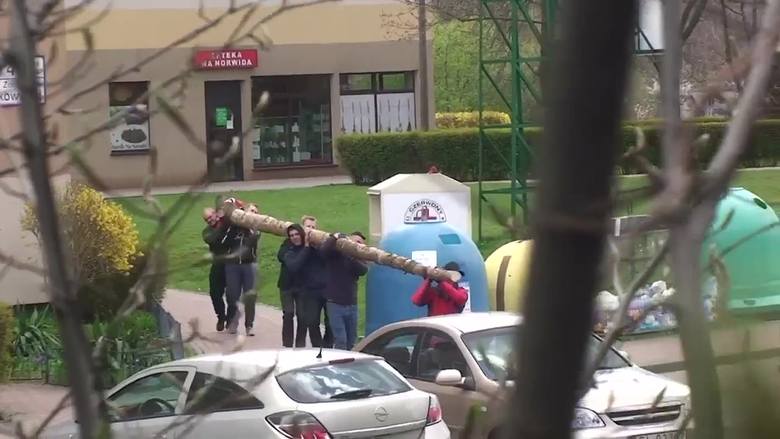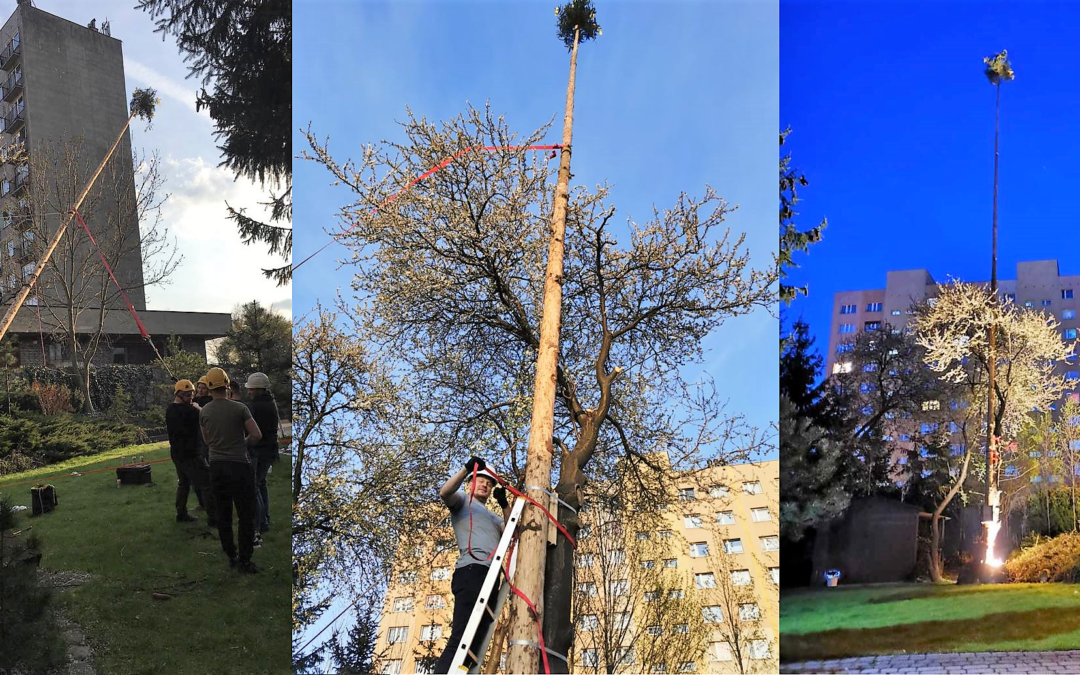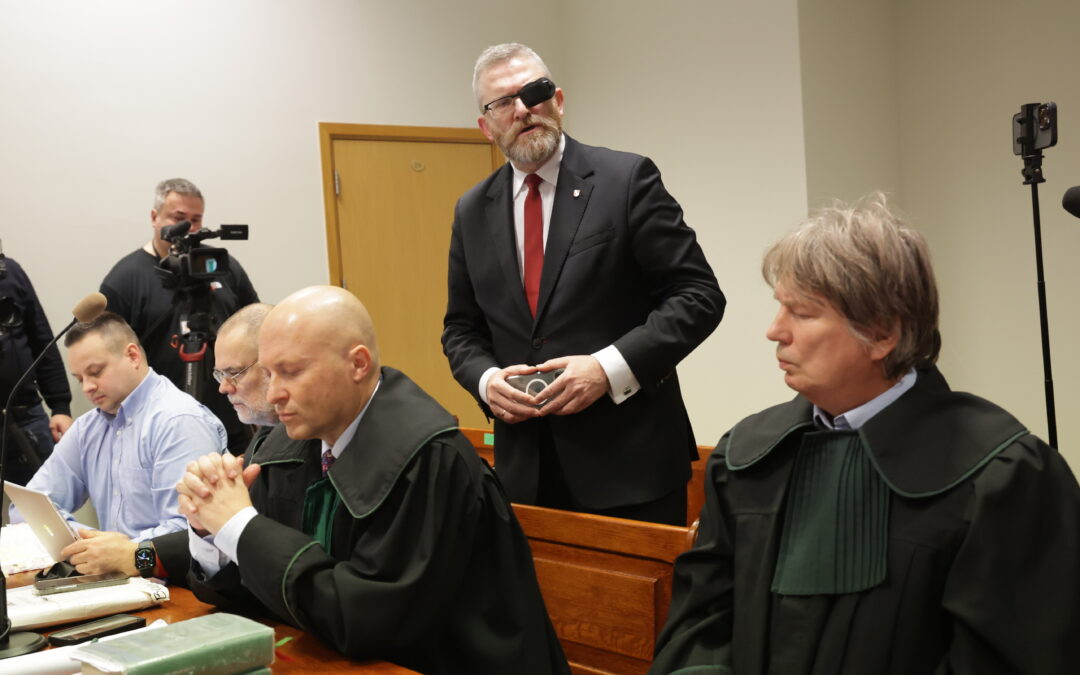A Polish highlander has surprised residents of the Silesian city of Ruda Śląska by erecting an 18-metre pole outside his fiancée’s home in a traditional marriage proposal from his home region.
The tradition of putting up a moj – which is a long wooden tree trunk stripped of bark and topped with a pine decoration – dates back to pagan celebrations of spring, but remains popular in the Orawa region straddling the Polish-Slovak border.
On the night of 30 April, Piotr Kubacki put up his own wooden structure with the help of friends. He embellished the pole with a wooden sign declaring his love for his fiancée, who has been his partner in a traditional dance troupe for more than a decade.

He had in fact informally proposed to her two years earlier – and she had said yes – but decided to complement that with a more traditional proposal ahead of their wedding.
Kubacki, who moved to Ruda Sląska from his home region 100 kilometres away, says that the moj is an “old tradition” where he grew up in Lipnica Wielka in Orawa. “As a child, I would watch young lads putting them up for ladies, and later I even helped out with them. Now the time has come for me.”
Kubacki told Notes from Poland that the moj is nowadays placed in a central location in the village, rather than outside someone’s window. “It’s an opportunity to meet, integrate and have fun.”
The moj is traditionally dug into the ground so that it can stand upright unsupported. But in Kubacki’s case, the structure was tied to a nearby plum tree.
“Given that it was in a small garden belonging my future in-laws – in the middle of a Silesian city – I had to compromise,” he explained. But he added that the tethering was the “only deviation from tradition”.
Next to his installation, Kubacki also pinned up a poster outlining the origins of the tradition of the “Highlander’s Valentine” and background information on the Orawa region. “People know very little about this corner of Poland,” he says.
While most of Orawa is in Slovakia, the north-eastern part of the region is located in southern Poland and spans around 300 square kilometres. There are an estimated 25,000 speakers of the local Orawian dialect, which is similar to Poland’s more general highlander dialect but with hints of Slovak.
Credit for all images: Piotr Kubacki/personal archive

Maria Wilczek is deputy editor of Notes from Poland. She is a regular writer for The Times, The Economist and Al Jazeera English, and has also featured in Foreign Policy, Politico Europe, The Spectator and Gazeta Wyborcza.




















